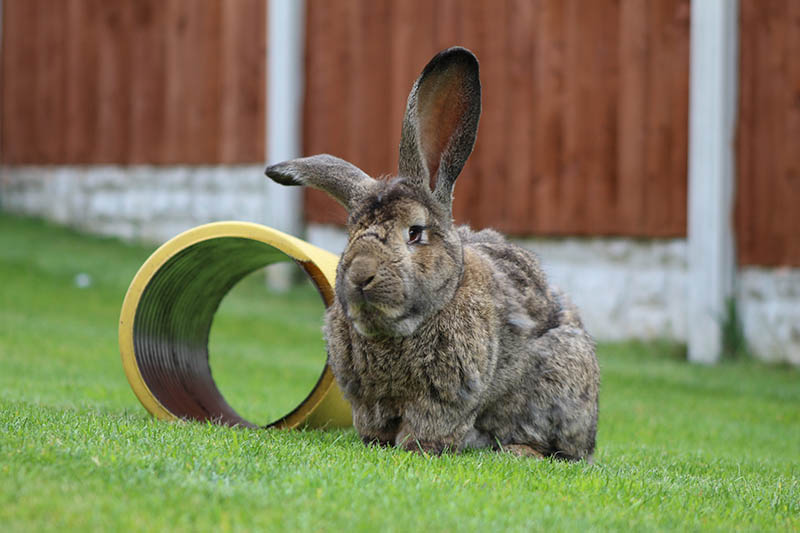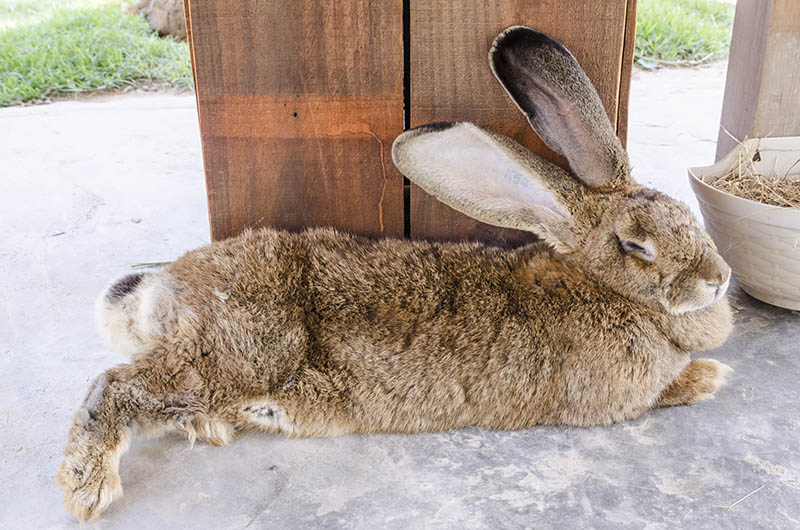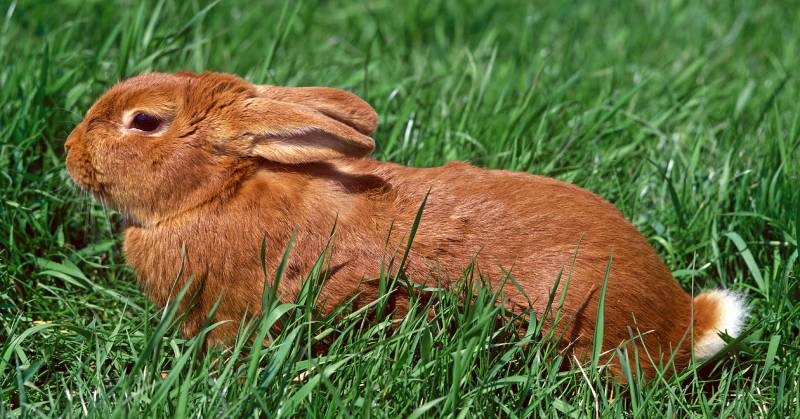6 Types of Lop Rabbits (With Pictures)

Updated on
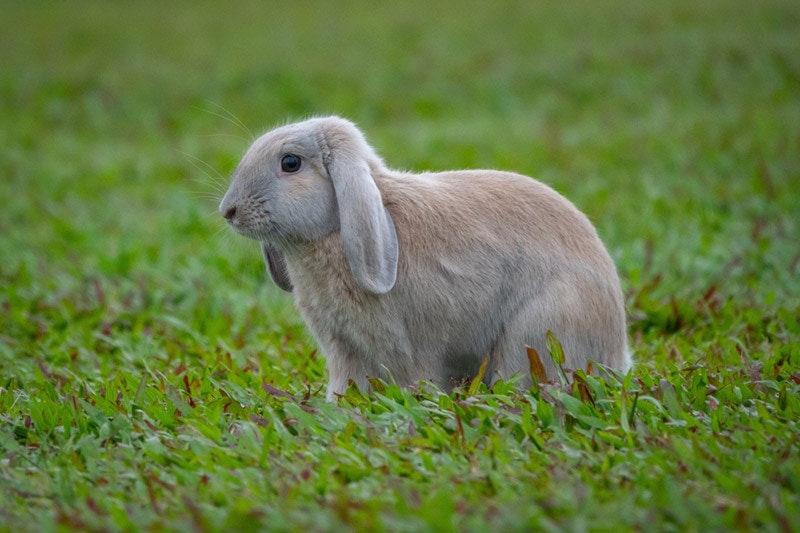
Everyone’s hearts melt at the sight of a calm rabbit chewing through leaves. But before rabbits were such common pets or immortalized on screens, Charles Darwin classified them into “lop” and “erect-eared” groups in the 1800s. Continue reading to find out more about types of domesticated lop-eared rabbits.
What Are Lop-Eared Rabbits?
A lop-eared rabbit refers to any rabbit whose ears drop loosely from the skull as opposed to being erect. Due to the unique adaptation, the cartilaginous ear bases have a small bulge known as a crown.
With a closer look, the head of a lop rabbit resembles that of a male sheep. Thus, the German and French terms for a lop rabbit are “Widder” or “Aries” and “bélie,” respectively, which both mean “ram”.
The 6 Types of Lop Rabbits
1. Mini Lop
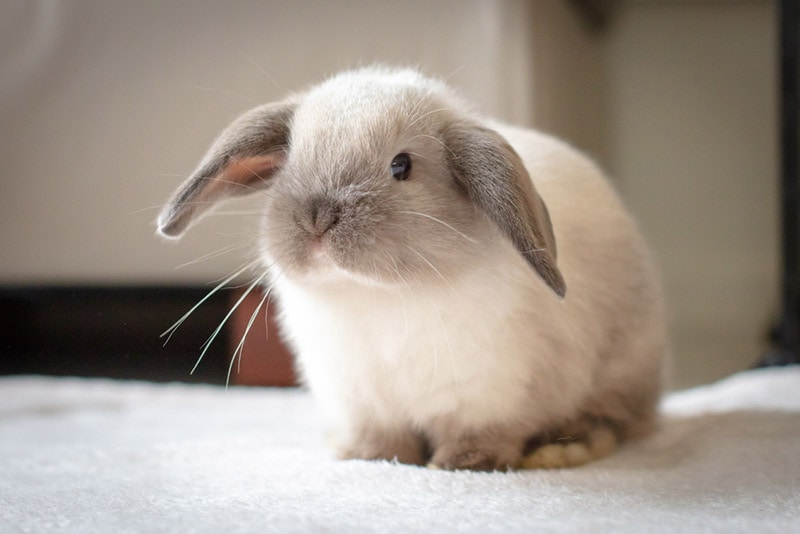
Not to be confused with the UK’s Miniature Lops, Mini Lops are small breeds tracing their origins to Germany. In 1972, Bob Herschbach, a rabbit promoter, discovered the breed at the German National Rabbit Show, Essen. The rabbits were born to German Big Lop and Small Chinchilla parents.
After traveling back to the USA, Herschbach successfully bred Mini Lop kits in the same year. The first litter was solid-colored kittens, but the second set wore a dramatic fur characterized by multiple pigmentations known as “agouti” coloration and white patches.
Over the years, Mini Lops have amassed respect worldwide. On world stages, judges look at their stocky bodies and medium, glossy, and thick fur that rolls back. The ear length should be between 0.8 and 1 inch and lie close to the cheek and below the jaws.
2. Original Lop
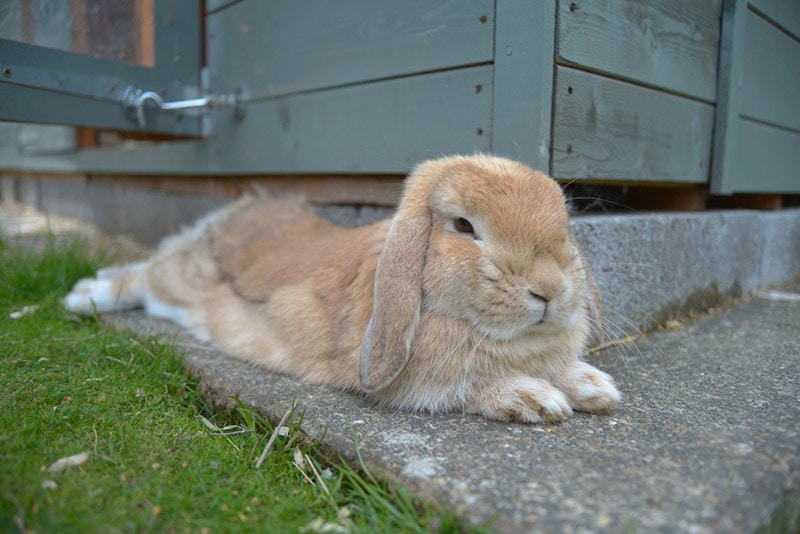
Original Lop rabbits are, arguably, the most decorated bunnies in the Lop family. They are among the oldest lop rabbits and have been used for breeding both the French and English Lops.
Being one of the largest breeds, they can weigh as much as 20 pounds. This means they require a spacious hutch with a soft and comfortable floor. Most pet parents appreciate their extra-long ears and calm demeanor. Unfortunately, their inactivity often results in obesity, so make sure to regulate food intake and ensure the rabbit gets exercise. You can raise it with other more active species to help it stay active.
3. French Lop
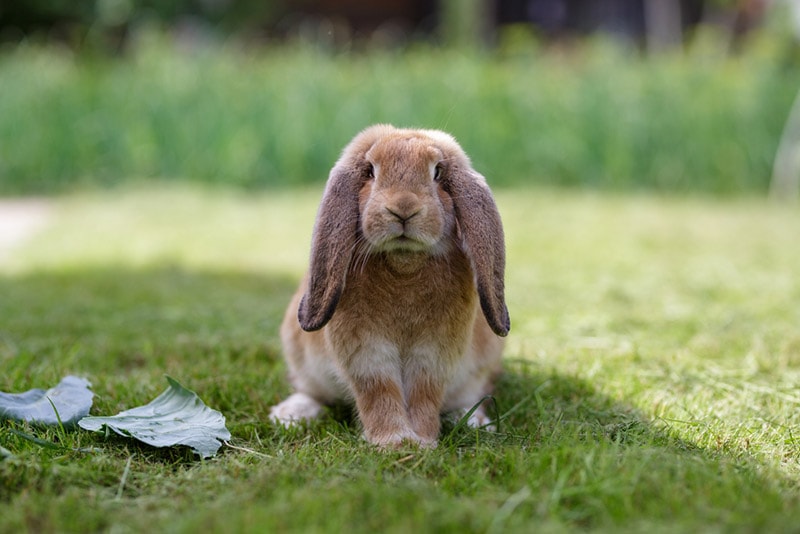
The French Lop is a breed of rabbits domesticated in the plains of France in the 1850s. They are the product of selective breeding between the Original Lop and the Giant Papillon or Giant French Butterfly rabbit. By mixing the Original Lop’s heavy body and giant ears with Papillon’s straight ear genes, a unique rabbit whose ears drop below the chin was born.
The rabbit has a medium-sized body covered by a dense coat. The short fur rolls back and comes in solid and broken color varieties. Solid-colored rabbits are mainly white, while broken varieties may be agouti, chinchilla, or fawn.
Originally intended for meat, people quickly fell in love with the rabbit’s calm nature. Today, French Lops are recognized by the American Rabbit Breeders Association (ARBA) and the British Rabbit Council (BRC).
French Lops require large space and thrive well when left to run around freely. If you have a spacious home, construct a small doorless hutch and install tunnels. The rabbit will use them as sleeping compartments when you are not around. However, ensure the rabbit lives in a quiet environment as it gets startled easily.
4. Cashmere Lop
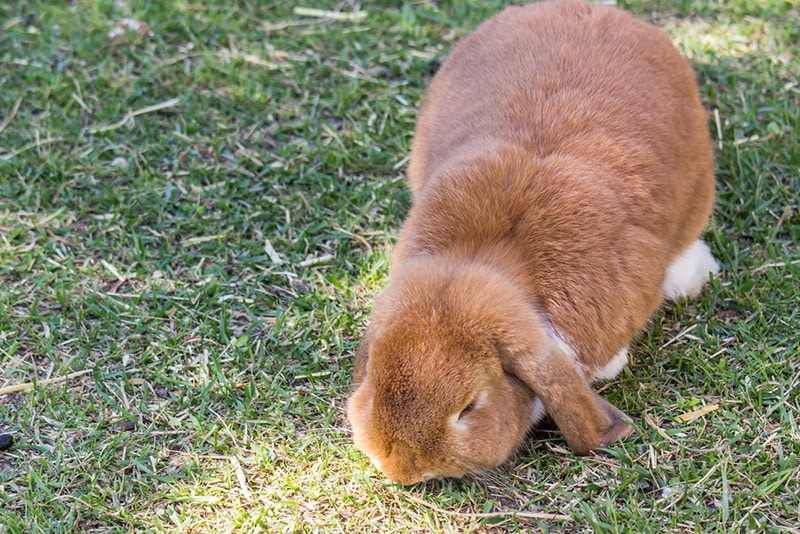
Cashmere Lop is a medium-sized rabbit breed originally bred in the UK. It closely resembles Dwarf Lops and features a firm body frame. On it, strong muscles spread to form a well-rounded rump and deep chest. Ears are rounded and have a smooth fur lining.
The front legs are short and straight, while the hind legs are strong and parallel to the body for short leaps. Covering the body is a silky coat. The fur is around 2 inches long and divided into a top coat and an undercoat. The top coat is long, heavier, and tougher compared to the soft shorter undercoat. Additionally, the undercoat is mostly light-colored, while the top coat may come in spectacular color ranges. Common colors are ruby-eyed white, chocolate, agouti, black and blue. Shaded colors such as seal points, iron gray, and Siamese smoke are also possible.
Due to the uniqueness of Cashmere’s fur, special care is required to avoid it becoming matted or tangling. Fortunately, when taken care of, Cashmere rabbits are appealing to many people.
Those who have reared the breed attest to its good immunity. It rarely gets sick and may live for more than a decade while maintaining an average body weight of around 5 pounds.
5. Dwarf Lops
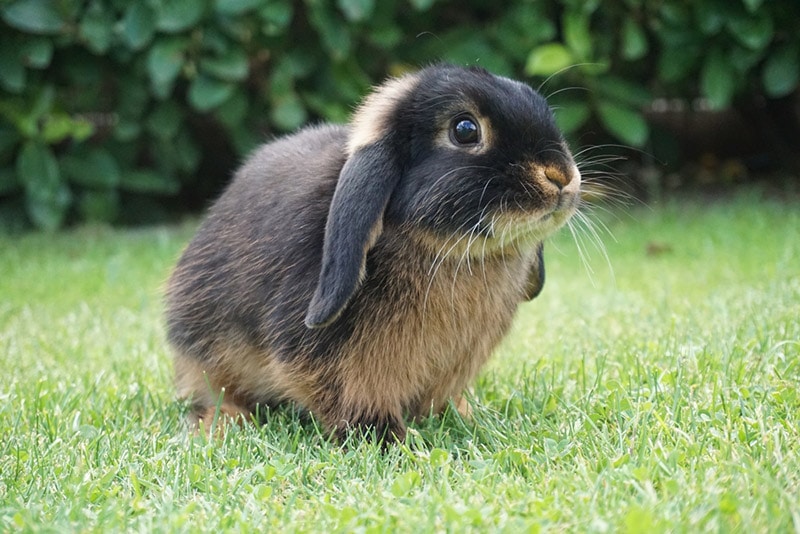
Dwarf Lops are true house pets with playful and non-aggressive characters. They cope well with older kids and adults inside large homes. But they should not be left around young kids because they don’t like to be carried around.
When identifying Dwarf Lops, people often confuse them with Mini Lops. Even though they share many similarities, size is the main differentiating criterion. Dwarf Lops are around 5.5 pounds, 2 pounds heavier than Mini Lops.
Original Dwarf Lops were bred in the Netherlands by making the dwarf gene in French Lop dominant. After many years, breeders successfully raised an internationally accepted Dwarf Lop whose hallmark is a substantially built round body that resembles a basketball with a small tennis ball sitting at the top. Large ears hang effortlessly on the broad head.
6. English Lop

English Lops are among the first rabbits bred for exhibition purposes as “fancy” animals in response to the growing demand for good-looking domesticated species in the Victorian era. Not much is known about the original breeders and parents. But from its phenotypic characteristics, the Original Lop may be one of the parents.
A mature English Lop is slender and longer than other rabbit breeds. Although the rabbit is not well built, on average, it weighs around 12 pounds. The broad head accommodates a long nose and shiny eyes.
The English Lop is the Guinness record holder for a rabbit with the longest ears, thanks to Geronimo Nipper’s, whose ears measured 31.125 inches at American Rabbit Breeders Association National Convention in Wichita, Kansas. The ears undergo rapid growth doubling in size each week of the first month. The length of the ears exceeds that of the body at only 4 weeks. Final growth stages will be recorded at 5 months, after which bucks’ ears will broaden.
English Lops have a good birth rate and maternal instincts. They give birth to large litters of between 8 and 15 kits after a 35-day gestation period.
Conclusion
There are many types of lop rabbits that originated mainly in the USA, UK, France, and Germany through selective breeding. Due to artificial selection, their ears became large and droopy, differentiating them from their wild cousins.
- See also: How Long Do Lop Eared Rabbits Live? Factors, Lifespan & Health Issues
- See also: German Lop Rabbit Breed Info: Pictures, Temperament & Traits
Featured Image Credit to Timothy Liu Kaihui, Shutterstock

